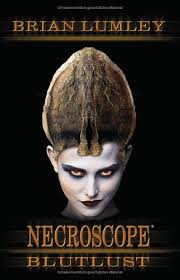
Torquay’s visitors and residents have had a significant influence on the evolution of Horror and Science Fiction literature.

One of our earliest tourists was the writer Mary Shelley (1797-1851) who visited Torquay in 1815 accompanied by her husband Percy Bysshe Shelley. This was the year before she wrote Frankenstein. Mary’s visit appears to have left its mark, as she later wrote a children’s story set in Torquay. Long thought lost, it was discovered in 2004 in the private archives of an Italian palazzo.

Another visitor to the Bay who went on to make his name in fantastic fiction was Robert Louis Stevenson (1850-1894). His first full-length work ‘Treasure Island’ (1883) brought him great fame and was followed by ‘The Strange Case of Dr Jekyll and Mr Hyde’ (1886). During the winter of 1865, Robert was in Torquay receiving private tuition and complaining of “the biting Oriental blasts, the howling tempests” of the Bay. Robert’s visit seems to have left an impression as he later used the town as a location in his short stories ‘The Dynamiter’ and ‘Superfluous Mansion’

One local who revelled in his reputation as a practitioner of ‘Magick’ was Aleister Crowley (‘the wickedest man in the world’), who lived in Barton. Aleister (1875-1947) founded the religious philosophy of Thelema and is now seen as one of the most influential occult writers of all time.
That’s him on the famous cover of the Beatles’ 1967 album, Sgt Pepper’s Lonely Hearts Club Band.
In 1973 local ‘historian’ Trevor Ravenscroft (1921-1989) published ‘The Spear of Destiny’, a book which “remains one of the most important texts in the field of Nazi occultism”. Some see Trevor’s books as classics of occult history while others consider them no more than inventive fiction.

Continuing the long tradition of Torquay’s association with horror and supernatural fiction was Sheddon Hill resident Brian Lumley (1937- ). An enthusiast for ‘cosmic horror’, Brian wrote the Necroscope series of novels, which now runs to 16 volumes and has been published in 14 countries. He’s also the author of more than 50 other titles.
Moving on to the Science Fiction genre we find St Marychurch resident Edward Douglas Fawcett (1866-1960) whose novels were strikingly predictive. In 1893 he published ‘Hartmann the Anarchist’ which related the story of a terrorist who bombs London in a series of air raids. The idea that air power could devastate cities was a decade before the Wright brothers first flew and the storyline predated HG Well’s ‘The Shape of Things to Come’ by 40 years. Another of Edward’s books ‘The Secret of the Desert, or How We Crossed Arabia in the Antelope’, was possibly the first fictional account of an armoured fighting vehicle, two decades before tanks appeared. Incidentally, in 1925 Edward’s brother Percy Fawcett left Torquay to lead an expedition into the Amazonian rainforest in search of a fabled lost city, and was never seen again. Percy has been suggested as the archaeologist/explorer behind the character of Indiana Jones.

Herbert George Wells (1866–1946) has been described as the Father of Science Fiction. One of his early short stories was ‘The Sea Raiders’, published in the Weekly Sun Literary Supplement in 1896. It features a series of attacks by an unknown aquatic species on bathers and boats along the coast of South Devon. These monsters had, “…rounded bodies… ghastly-looking creatures, in shape somewhat resembling an octopus, with huge and very long and flexible tentacles. The skin had a glistening texture, unpleasant to see, like shiny leather. The downward bend of the tentacle-surrounded mouth, and the large intelligent eyes, gave the creatures a grotesque suggestion of a face.”
Note the similarities of the Torbay monsters to those later alien invaders that gave Tom Cruise such a hard time in the movie version of Wells’ ‘The War of the Worlds’.
Finally, let’s look at a local author whose influence in both the horror and science fiction genres has earned him the title of the ‘Stephen King of his era’.
This was Edward Bulwer-Lytton (pictured above) who lived in Argyll Hall on Warren Road. Edward certainly had an in-depth knowledge of the occult which earned him the respect of the leading figures of the 19th century occult revival. Indeed, Edward’s ‘The Haunters and the Haunted’ (1859) is recognised as the first modern haunted house story and it still appears in anthologies.
One of his most popular excursions into the fantastic was ‘Vril, the Power of the Coming Race‘ (1871). This novel contributed to the birth of the science fiction genre and has been quoted as the first of a dystopian tradition that led to George Orwell’s ‘1984’ and Huxley’s ‘Brave New World’.
It relates the story of a race of subterranean super beings and a source of energy called ‘Vril’. Oddly, some readers believed that its accounts were fact rather than fiction – Helena Blavatsky, the founder of Theosophy, claimed that Edward derived the idea of Vril from ancient Indian writings. In 1947 a German rocket engineer called Willy Ley claimed that the Nazi ‘Society for Truth’ was devoted to looking for Vril. Vril has consequently become associated with bizarre fringe theories about Nazi flying saucers, force-ray cannons and the lost Atlantis.
Along with Edward, the novel has now largely been forgotten, yet there remains a reminder of how familiar it was to the Victorian public. During the late 19th century, the word ’Vril’ came to be associated with ‘life-giving elixirs’. In 1886 John L Johnston was looking for a name for his ‘liquid life’ beef extract drink.
He chose a blend of the words Bovine and Vril… and named his new hot beveridge ‘Bovril’.



























